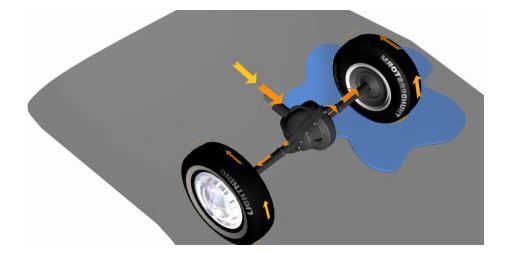Originally published at: https://www.pakwheels.com/blog/differential-working/
If you have friends who are into offroading and 4x4s, you must have heard them talking about differentials. But differentials are not just about offroading and 4x4 vehicles. In this blog, we will be talking and explaining differentials and how they work. So let's begin.
Also Read: What is a Catalytic Converter and What Does it do?
Differential is basically a gear train that splits the engine torque in two ways allowing each output to spin at a different speed. A differential is used for the following purposes:
- To pass on power to the wheels from the engine
- Act as the final gear reduction in the vehicle
- Allowing wheels to rotate at different speeds
Need:
During a turn, the inner wheels of the car have a shorter radius to travel along the curvature than the outer wheels, which have a greater portion of the circumference to cover. This means that for the car to cover the total distance in the same time, the outer wheels would have to rotate at a faster speed (angular velocity) than wheels on the inside. Differential helps the tires in this regard, allowing them to spin variably. Without a differential, the engine would force all the wheels to spin with the same angular velocity thereby ‘locking’ them or making them skid (this can be observed in the local chinqchi).
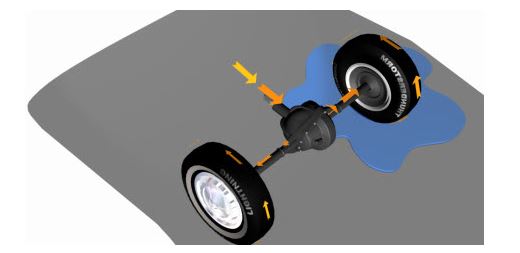
Components:
The engine transfers power to the differential using a pinion. The pinion is connected to the ring gear which in turn is connected to the spider gear. This spider gear rotates along the rotation of the ring gear as well as spins on its own axis. The spider gear is then connected to the shafts leading to the wheels through two bevel gears. Power transfers from the engine to the pinion gear, followed by the ring gear, through the spider gears, to the bevel gears and on towards the wheels.

Working:
A simple differential operates in the following way:
-
When the car is moving straight:
In this case, the spider gear does not spin on its own axis, rather it moves with the bevel gears as a single unit. This means that both the side gears will rotate with the same speed. Consequently, the wheels will have the same angular velocity.
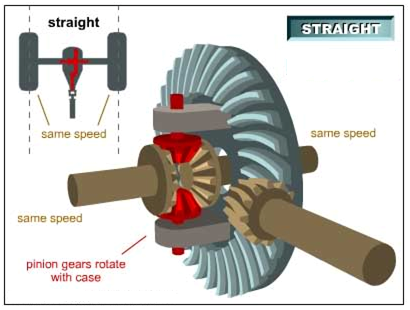
-
When the car is turning:
During a turn, the spin of spider gear comes into play. As it is spinning, it pushes the side gears with it. The resultant of the spin and its rotation with the ring gear makes for an addition of both velocities on one side whereas a subtraction at the other. Hence one of the two side gears spins faster than the other, making one wheels cover more distance in the same amount of time.
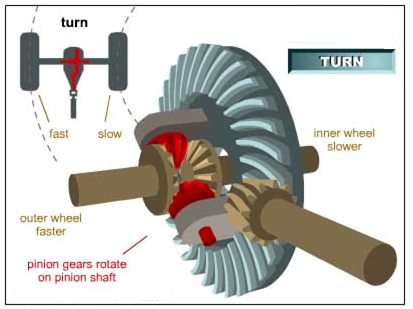
Other functions:
-
Speed reduction from the engine – This is achieved by using a ring gear which is having almost 4 to 5 times number of teeth as that of the pinion gear. Such huge gear ratio will bring down the speed of the ring gear in the same ratio. These speed reductions allow for more torque augmentation.
-
Distributes power by an angle of 90⁰ from the shaft towards the wheels.
.
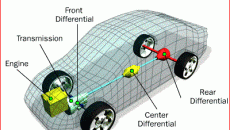


Drawback:
The differentials we have studied now are open differentials.
Although it is an ingenious invention, it still has some drawbacks. Considering your vehicle to be stuck as such that one wheel has traction where as other is on the slippery surface. In such a case, more power will be transferred to the wheel having less load meaning the car would not be able to free itself.
Such a drawback is overcome by using limited slip differentials. Though the overall basic operation of all of them is the same.
